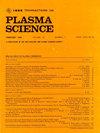微波非热等离子体反应器处理柴油机废气中NOx的研究
IF 1.3
4区 物理与天体物理
Q3 PHYSICS, FLUIDS & PLASMAS
引用次数: 0
摘要
为了评估仅使用微波而不进行级联处理(例如电子束或化学反应物)是否可以减少柴油发动机废气中的氮氧化物,开发了一种概念验证微波非热等离子体反应器(NTPR)。实验研究采用2.47 GHz的10和5 kW源驱动基于波导的腔,实现了22.6 dB的放大增益。脉冲微波气体处理证明,通过使用最佳的脉冲持续时间和脉冲重复率对,可以减少氮氧化物。通过使用不同占空比的脉冲方案,进一步提高了氮氧化物还原效率。本文章由计算机程序翻译,如有差异,请以英文原文为准。
Diesel Engine Exhaust Gas Treatment for NOx Reduction Using Microwave Nonthermal Plasma Reactor
A proof of concept microwave non-thermal plasma reactor (NTPR) has been developed in order to assess whether the sole use of microwaves without cascading treatment, for example, electron beam or chemical reactants, may reduce NOx in diesel engine exhaust gas. The experimental study used a 2.47 GHz source at 10 and 5 kW to drive a waveguide-based cavity achieving an amplification gain of 22.6 dB. Gas treatment with pulsed microwaves proved that NOx reduction is possible by using optimal pairs of pulse durations and pulse repetition rates. Further improvements on the NOx reduction efficiency were achieved by using a varying duty cycle pulsed scheme.
求助全文
通过发布文献求助,成功后即可免费获取论文全文。
去求助
来源期刊

IEEE Transactions on Plasma Science
物理-物理:流体与等离子体
CiteScore
3.00
自引率
20.00%
发文量
538
审稿时长
3.8 months
期刊介绍:
The scope covers all aspects of the theory and application of plasma science. It includes the following areas: magnetohydrodynamics; thermionics and plasma diodes; basic plasma phenomena; gaseous electronics; microwave/plasma interaction; electron, ion, and plasma sources; space plasmas; intense electron and ion beams; laser-plasma interactions; plasma diagnostics; plasma chemistry and processing; solid-state plasmas; plasma heating; plasma for controlled fusion research; high energy density plasmas; industrial/commercial applications of plasma physics; plasma waves and instabilities; and high power microwave and submillimeter wave generation.
 求助内容:
求助内容: 应助结果提醒方式:
应助结果提醒方式:


